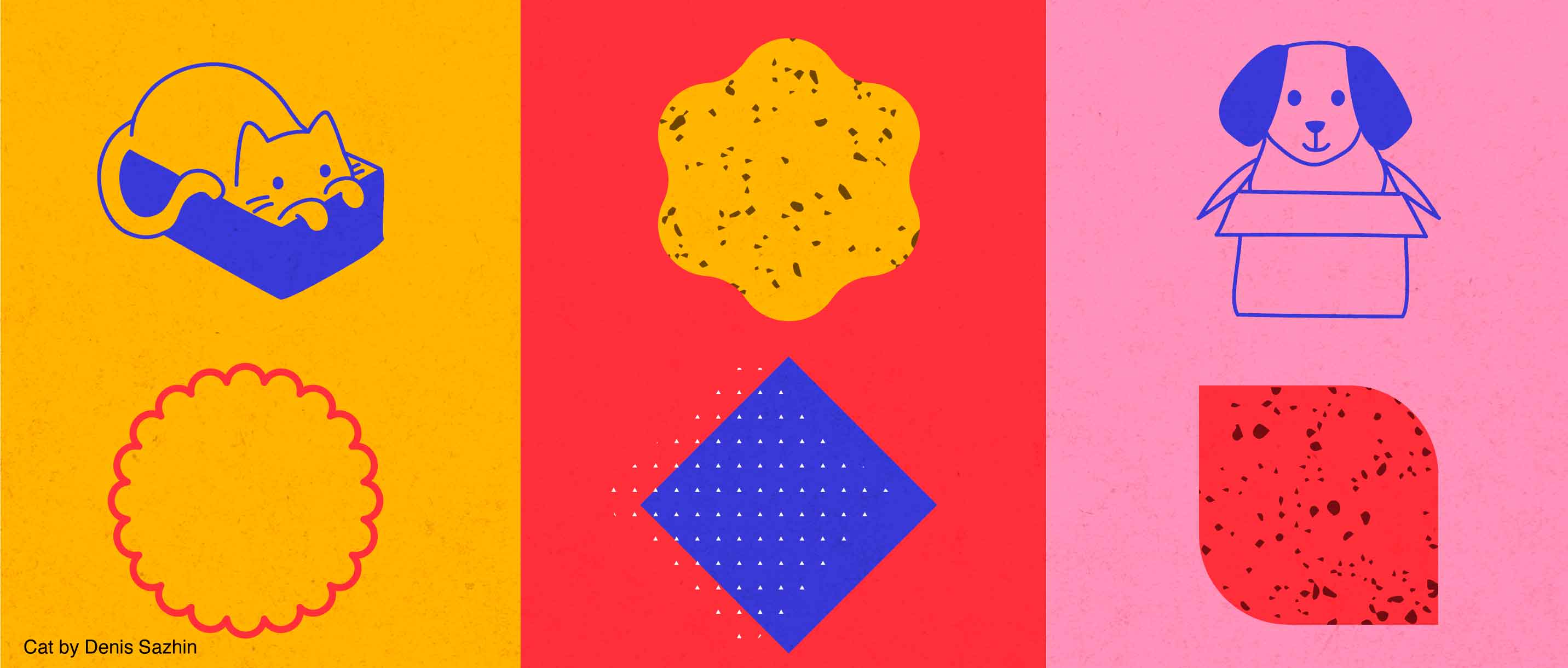

In the complex environment of CPG pet food, the variety pack is expected yet incredibly challenging for consumers to shop. With so much to communicate – brand, sub-brand, form, flavor, ingredients, benefits, and more – variety packs also have varying counts, flavors, and forms. How can we keep variety pack design clean while aiding navigation?
1. Don’t dilute the brand.
With limited space, it’s tempting to minimize brand identity. However, variety packs already communicate value, so trust, and quality are essential to balance the perception of lower costs. Leading with the brand on any CPG product, particularly pet, communicates trust and quality. Move lesser priority communication to the back or forsake it altogether rather than minimize your identity.
2. Embrace the holding shape.
In my former life working on P&G brands, I had a serious love-hate relationship with holding shapes and violators. However, regarding variety packs, it is a universal CPG truth that color and shapes are your friends. They serve multiple purposes – they communicate flavor through color and easily separate counts and forms to make shopping easier. They can also add personality if appropriate. Forgoing other messaging to keep identity prominent? Add emotion through deliberate shapes.
3. Stack numbers intuitively.
Brands that don’t use a holding shape often rely on a heavy stroke or an outline to communicate individual counts or numbers. Yellow is a common category cue for value, but it vibrates against brown, red, or pink – all typical flavor colors in pet food. Making the mathematical equation overt is more effective. Stacking the numbers is a tidier way to communicate value, and it quickly showcases what is different within the variety pack.
4. Use imagery (smartly).
The best thing about a variety pack is they usually come in a larger structure, so there is room for imagery. There are several challenges to showcasing imagery on variety packs: pates, purees, and kibble don’t often look different to the naked eye despite ingredient distinction. And even if it does look different, does it look good? As long as they are distinct and separate enough, lean into the primary raw ingredients to differentiate flavors.
You can also showcase the product in the package form, like an image of a pouch. It doesn’t have the added benefit of taste appeal, but it indicates multiple items. If the distinction between the renders is unclear, pump up a feature (check regulatory guidelines; you can remove information in this context) and add contrasting colors (or holding shapes!) to showcase differences.
(Bonus) 5. Communicate usage and occasion. This approach only works IF you have the extra space to allow for it (and that means leaving calm space) or a pack with a window to do some of the work for you. However, usage and occasion are engaging ways to communicate variety intuitively for the consumers shopping a variety pack. For example, Cesar has “meals” for breakfast and dinner. They can show 6 “breakfast” items and 6 “dinner” items to indicate they differ. Free idea here! A treat multipack with “play time, down time, snack time” could uniquely show distinct usage and add personality.
In summary, keep the brand prominent, use shapes and colors to communicate differences, stack numbers tidily, use imagery to showcase variety, and indicate usage occasions if space allows. Above all, keep the design as navigable as possible.
Interested in more information specific to pet food cpg branding? Check out this article on brand loyalty.









